
Journal of Rubber Research
Scope & Guideline
Advancing Rubber Science for a Sustainable Future
Introduction
Aims and Scopes
- Material Science and Engineering:
The journal covers the development and characterization of various rubber materials, including natural rubber and synthetic elastomers, highlighting their mechanical, thermal, and rheological properties. - Sustainability and Environmental Impact:
Research on sustainable practices in rubber cultivation and processing, including recycling and the use of eco-friendly materials, is a core theme, reflecting a commitment to environmental stewardship. - Biocompatibility and Medical Applications:
The journal explores the use of rubber materials in medical applications, emphasizing biocompatibility and the development of antimicrobial properties for healthcare products. - Innovative Processing Techniques:
Studies on novel processing techniques, including 3D printing and advanced compounding methods, are featured, showcasing the integration of technology into rubber manufacturing. - Plantation and Agricultural Science:
Research on rubber tree cultivation, including genetic studies and the impact of environmental factors on yield and disease resistance, is a significant focus area. - Nanocomposites and Advanced Materials:
The exploration of nanomaterials and their incorporation into rubber matrices for enhanced properties is a trending research area, contributing to the development of high-performance materials.
Trending and Emerging
- Sustainable Practices in Rubber Production:
There is a growing emphasis on sustainability, with research focusing on sustainable cultivation practices, recycling of rubber materials, and eco-friendly processing methods. - Nanotechnology in Rubber Materials:
The integration of nanotechnology in rubber composites is a rapidly emerging theme, showcasing advancements in material properties and performance for diverse applications. - Advanced Characterization Techniques:
The use of sophisticated characterization methods to analyze rubber materials is on the rise, providing deeper insights into their behavior under various conditions. - Rubber in Biomedical Applications:
The application of rubber materials in biomedical fields, including drug delivery systems and medical devices, is gaining momentum, reflecting a trend towards health-related innovations. - Impact of Climate Change on Rubber Cultivation:
Research addressing the effects of climate change on rubber plantations and strategies for adaptation is becoming increasingly relevant, aligning with global sustainability goals.
Declining or Waning
- Conventional Rubber Processing Techniques:
Traditional processing methods are receiving less attention as the journal shifts towards innovative techniques and sustainability-focused research. - General Reviews on Rubber Industry:
Broad reviews summarizing the rubber industry landscape are declining in favor of more focused, data-driven studies that provide specific insights and applications. - Basic Physical Properties of Rubber:
Research centered solely on fundamental physical properties without application context is diminishing, as the journal favors studies that link material properties to real-world applications.
Similar Journals
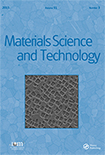
MATERIALS SCIENCE AND TECHNOLOGY
Driving Excellence in Materials Science ResearchMATERIALS SCIENCE AND TECHNOLOGY is a leading journal published by SAGE PUBLICATIONS INC, focusing on the interdisciplinary advancements in the field of materials science. Since its inception in 1984, the journal has provided a platform for researchers and industry professionals to present innovative findings through rigorous peer-reviewed articles. The journal holds a commendable impact factor and categorizes itself within the prestigious Q2 rank in various domains such as Condensed Matter Physics, Materials Science, Mechanical Engineering, and Mechanics of Materials according to the 2023 Quartiles. With no Open Access option, it primarily serves as a repository for in-depth studies and advancements that push the boundaries of materials engineering and application. Located in the United Kingdom, at 2455 TELLER RD, THOUSAND OAKS, CA 91320, the journal continues to attract a global readership, making it indispensable for academics, researchers, and students who aim to stay at the forefront of materials innovation.

RUBBER CHEMISTRY AND TECHNOLOGY
Showcasing Cutting-Edge Developments in RubberRubber Chemistry and Technology is a distinguished journal published by the American Chemical Society, focusing on the vital field of rubber science and technology. With the ISSN 0035-9475 and an E-ISSN of 1943-4804, this journal has provided a platform for scholarly research since its inception in 1970, straddling a rich history of contributions in the area of materials science and polymers. In the most recent assessments, it holds a Q3 ranking in both Materials Chemistry and Polymers and Plastics, indicative of its growing influence and respect in the scientific community. Researchers and professionals benefit from a wide spectrum of topics, including the latest advancements in rubber formulations, processing technologies, and applications across various industries. Although it operates under a traditional subscription model, its commitment to high-quality, peer-reviewed research makes it an essential resource for anyone involved in the cutting-edge study of rubber as a material. Given its ongoing publication and relevance to the field, Rubber Chemistry and Technology remains a cornerstone for professionals and academics eager to explore innovative rubber technologies and their applications.
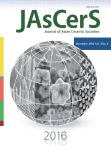
Journal of Asian Ceramic Societies
Advancing ceramic innovation across Asia.The Journal of Asian Ceramic Societies, published by Taylor & Francis Ltd, is a peer-reviewed open-access journal that has been at the forefront of ceramic research since its inception in 2013. With an ISSN of 2187-0764, this esteemed journal is dedicated to advancing the scientific understanding of ceramics and composites, bolstered by an impressive ranking of Q2 in the field of Materials Science. Covering a wide range of topics pertinent to ceramics, the journal aims to foster collaboration among researchers, professionals, and students across Asia and beyond. Its commitment to accessibility allows a global audience to engage with cutting-edge research, reflected in its Scopus ranking of #45 out of 127 in the Materials Science category. With a publication timeline extending to 2024, the Journal of Asian Ceramic Societies is an indispensable resource for anyone looking to stay informed on the latest developments and innovations in ceramic technology.
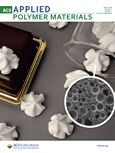
ACS Applied Polymer Materials
Innovating Materials, Transforming ApplicationsACS Applied Polymer Materials is a prestigious journal published by the American Chemical Society, specifically tailored for the dynamic fields of Organic Chemistry, Polymers and Plastics, and Process Chemistry and Technology. With its ISSN 2637-6105, the journal has rapidly established itself within the academic community, achieving a distinguished Q1 quartile ranking across multiple categories in 2023. This places it among the top-tier journals globally, reinforcing its critical role in disseminating groundbreaking research and innovation in polymer science. The journal is known for its rigorous peer-review process and publishes high-quality articles that are pivotal for researchers, professionals, and students eager to advance knowledge in polymer materials and their applications. Positioned to cover converging themes from 2019 through 2024, ACS Applied Polymer Materials embraces a wide scope of studies, from fundamental chemistry to practical engineering applications, thereby fostering significant advancements in material science. While it offers traditional access options, the journal's impact is reflected in its impressive rankings within Scopus, indicating its relevance and influence in the chemical engineering domain. Join the global community of innovators and discover the latest insights that continue to shape the landscape of applied polymer research.

Journal of Metals Materials and Minerals
Advancing Knowledge in Metallurgy and Materials ScienceJournal of Metals Materials and Minerals (ISSN: 0857-6149) is a renowned academic publication dedicated to the interdisciplinary fields of metallurgical science, materials engineering, and mineralogy. Published by Chulalongkorn University, Metallurgy & Materials Science Research Institute in Thailand, this journal serves as a pivotal platform for researchers to disseminate their findings and explore innovative applications related to metals, ceramics, polymers, and biomaterials. Although the journal does not currently adopt an open-access model, it provides insightful content that facilitates knowledge sharing among professionals and academics alike. The journal has established its credibility with impressive Scopus ranking percentiles, particularly in categories such as Metals and Alloys and Ceramics and Composites. With an emphasis on advancing the understanding of materials science from 2017 to 2024, the Journal of Metals Materials and Minerals remains an essential resource for those striving to contribute to and stay informed about the latest trends and breakthroughs in these dynamic fields.

INTERNATIONAL POLYMER PROCESSING
Advancing Polymer Knowledge for a Sustainable FutureINTERNATIONAL POLYMER PROCESSING, published by WALTER DE GRUYTER GMBH, serves as a crucial platform for professionals and researchers in the fields of Chemical Engineering, Industrial and Manufacturing Engineering, and Materials Science, particularly focusing on polymers and plastics. With its ISSN 0930-777X and E-ISSN 2195-8602, this journal has been in circulation since 1988 and continues to expand its contributions to contemporary research trends through to 2024. Ranking in the third quartile across multiple categories, including Chemical Engineering (miscellaneous) and Materials Chemistry, it offers insightful and rigorous peer-reviewed articles that enhance the understanding of polymer processing technologies and innovations. This journal is vital for anyone engaged in polymer science and engineering, providing both theoretical and practical perspectives that advance the field. Although it does not provide open access, the journal's content is indispensable for academia and industry professionals looking to stay at the forefront of polymer research.

KGK-Kautschuk Gummi Kunststoffe
Pioneering Developments in Elastomers and PolymersKGK-Kautschuk Gummi Kunststoffe is a prominent journal dedicated to the fields of industrial and manufacturing engineering, materials chemistry, mechanical engineering, and polymers and plastics. Published by DR ALFRED HUTHIG VERLAG GMBH in Germany, this journal has established itself as a vital resource for researchers and professionals involved in the rubber, elastomers, and polymer industries since its inception in 1978. With an emphasis on contemporary advancements and emerging technologies, the journal aims to disseminate cutting-edge research and developments in the understanding of material properties, processing techniques, and applications. While the journal is categorized in the Q4 quartile across multiple disciplines in 2023, it still plays a crucial role in bridging the gap between theory and practical innovation. Researchers, professionals, and students alike are encouraged to contribute to and engage with the latest insights in this dynamic field, fostering collaboration and knowledge sharing to advance applications in industry and academia.

Journal of Fiber Science and Technology
Innovating Textiles for Tomorrow's ChallengesJournal of Fiber Science and Technology is a pivotal scholarly publication dedicated to advancing the field of fiber science, encompassing the study of fibers and textiles across various applications. Published by SOC FIBER SCIENCE TECHNOLOGY in Japan, this journal has been a significant forum for innovative research since its inception, with coverage from as early as 1946. Despite its current categorization in the Q4 quartile across multiple disciplines including Chemical Engineering, Industrial and Manufacturing Engineering, and Materials Science, the journal provides a valuable platform for the dissemination of knowledge, fostering collaboration among researchers, professionals, and students alike. The journal promotes an interactive learning environment, welcoming contributions that underscore the latest advancements in fiber materials, processing technologies, and their broad industrial implications. By bridging theory and practical application, the Journal of Fiber Science and Technology is essential in shaping the future of fiber technology.
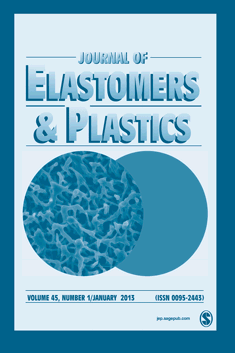
JOURNAL OF ELASTOMERS AND PLASTICS
Elevating Knowledge in Materials ChemistryJOURNAL OF ELASTOMERS AND PLASTICS is a prestigious peer-reviewed journal published by SAGE Publications Ltd that has been at the forefront of material science research since its inception in 1969. Focusing on the fields of Materials Chemistry and Polymers and Plastics, this journal aims to disseminate cutting-edge research that explores the synthesis, characterization, and application of elastomers and plastics in various industries. With a position in the Q2 category for both Materials Chemistry and Polymers and Plastics as of 2023, it showcases significant contributions that push the boundaries of knowledge in these vital areas. Although it does not offer Open Access options, the journal continues to be regarded for its rigorous standards and comprehensive peer-review process. Researchers, professionals, and students in the field will find valuable insights and essential methodologies that can drive innovation and enhance practical applications in elastomers and plastics.
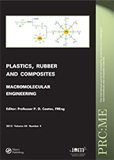
PLASTICS RUBBER AND COMPOSITES
Exploring Innovations in Polymers and CompositesPLASTICS RUBBER AND COMPOSITES is a leading academic journal published by SAGE Publications Inc., dedicated to advancing the understanding and application of polymers, plastics, and composite materials. With an ISSN of 1465-8011 and an E-ISSN of 1743-2898, this quarterly publication attracts a diverse readership from the fields of ceramics and composites, chemical engineering, materials chemistry, and polymer science. Currently indexed in the Q3 category across multiple relevant domains, the journal provides a platform for high-quality research and innovations that contribute significantly to material science. The journal's commitment to disseminating cutting-edge research makes it a valuable resource for researchers, industry professionals, and students who are eager to explore the latest developments and applications in this dynamic field. Despite its current non-open access status, the journal's rigorous peer-review process ensures that all published articles meet the highest academic standards, thus reinforcing its reputation as an essential source for scholarly work in the materials sector.